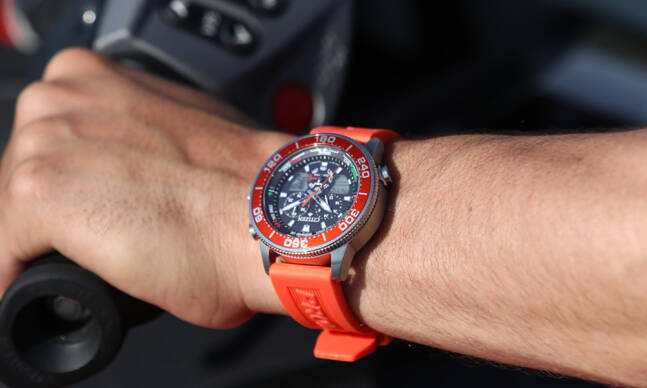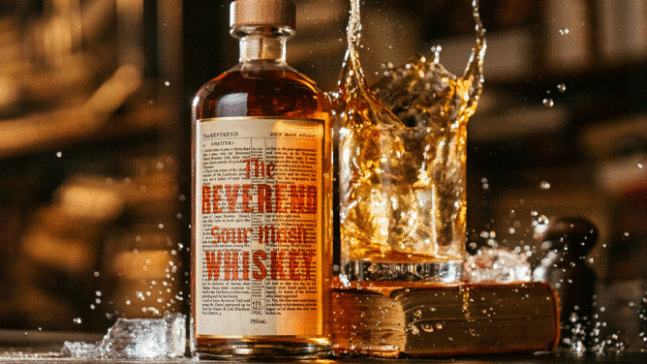Jay Fielden has influenced the way men live and style themselves for more than three decades. He was the founding editor in chief of Men’s Vogue, as well as worked as the editor in chief of Town & Country and Esquire. His writing has been published in The New Yorker, Hodinkee, and AirMail, among many others. It only takes a quick look at his Instagram to know that he’s a bon vivant with an appreciation for fancy living.
These days, Fielden has his hands in any number of projects that catch his eye. Most recently? Valentine’s Day card writing in partnership with Dewar’s. Buy a bottle of Dewar’s 12-year-old as a gift, choose from one of 12 Valentine’s Day messages written by Fielden. Just note these aren’t your average feel-good cards—one for an aspiring writer reads, “I thought a wee dram might help you finally write the great American Substack.”

I caught up with Fielden over email ahead of the perfect day to gift one of his cards to learn more about his recent projects, defining one’s personal style, and what he always takes with him on his travels.
Cool Material: You’ve taken on a lot of different projects since leading Esquire. How do you pick what you want to work on next?
Jay Fielden: I like to learn, and I want to maintain a high standard for my work. Bridgewater and now the private bank at JP Morgan invited me in to help them improve the editorial quality and engagement success of their highly-regarded digital newsletters. I didn’t know much about inverted yield curves, balance of payments, monetary policy three, or the macro mechanics of inflation before, much less radical transparency!
I’ve found all that new knowledge to be very relevant in how I solve problems. One golden rule is always establish and articulate the goals, and then test and tweak your approach against them. It sounds obvious, but I’m amazed how often this step gets skipped. I follow a similar mental approach to creative projects, like a poem I’m trying to write that’s being a pain in the ass or a cool goal-oriented collaboration with John Lobb or this new one with Dewar’s. (“Just be funny about Valentine’s Day, Jay!” Gulp.)

Dewar’s, of course, is legendary. I remember seeing the Dewar’s Profiles ads in the magazines I read growing up. Your bar’s just not well stocked without it, especially a bottle of the seriously impressive new Dewar’s 12.
I also feel very lucky to have a wider group of topics to think about and master these days than I did even as a general-interest magazine editor. I’m very afraid of being bored—it’s a shortcoming—but I can’t really complain that I am right now.
Describe your style in one sentence.
Rad trad with bespoke tendencies.
Was there a moment you first fell in love with good style, or have you always been interested in the aesthetically pleasing?
I’m afraid it was pretty early. Before I could pronounce Charvet, I had some sense that it’s like was out there, and I felt an internal drive to find it. I worked in a Ralph Lauren boutique during college and absorbed that world completely. Then, as an editor at Vogue (and Men’s Vogue) I had a style expanding moment. That’s when I began to learn how to give something classic a little jolt of fashion cool. I think my first success was a double-breasted Prada suit with a shirt made by the Texas shirtmaker Hamilton, an Hermes tie, and a pair of Lobbs.
Which do you prefer: Keep up with trends or lean on classics?
I can easily get sucked in by a trend, but I think it’s important not to look like some workadaddy trying to keep up with the kids. I wouldn’t wear anything Gucci myself, for instance, or get a tattoo, or sport novelty facial hair.
But, then, I like Valentino, anything camo especially. I think Pierpaolo Piccioli, the designer, knows how to create clothes for men where trend and classic often meet—a lot like Tomas Maier did when he was at Bottega, and Veronique Nichanian does at Hermes. Even if you can’t afford it, there’s a lot to learn by just paying attention.
I also like Goyard wallets, and I’d even have my initials put on one! And I keep up with some of the bespoke workwear brands, especially Fortela, and the Japanese denim guys, especially Momotaro.
Unless you know what to choose, fashion doesn’t usually age well, unless it’s maybe Dries Van Noten; it’s not really supposed to. I learned over time that it makes more sense to buy great quality—Charvet knit ties, Cleverley or Lobb shoes, and when I can afford it, something bespoke by either Anderson & Sheppard or Denis Frison. My advice: build a wardrobe that is basically timeless, and then put your money into things that—excuse the finance speak—become storeholds of wealth, like a good watch (or three).
How do you keep things fresh after so many years of helping define men’s style?
I keep up! There’s always a new brand to watch more closely (Officine Generale, Ami) or one I’ll decide to get to know better (Drake’s). Remember how I mentioned I get bored? I’m incapable of not finding a little something new here and there. I’m quite the Ebay and RealReal hound.
Who (or what) do you draw your style inspiration from today?
I’m probably a lot like everyone else—I scroll Instagram! I gravitate mostly to the legends, especially when I come across a photograph I’ve never seen like one recently of Daniel Day-Lewis’s dad, the poet Cecil Day-Lewis, wearing tweed on tweed on tweed like an old Ralph Lauren ad Bruce Weber shot. I have a lot of magazines from the 80s—the ones I grew up with: Esquire, GQ, M, L’Uomo Vogue. That era and the incarnations of those magazines at that time remain paragons of men’s style. It was a golden age of great sophistication and super-refined taste that didn’t feel narcissistic. Hoodies and jeggings aren’t even in the same universe. Neither is all the picky dandyism on the other end of today’s style spectrum. Both feel like costumes to me.
What’s the one piece of clothing or gear that you take with you on your travels no matter where you’re going?
I always take a book, probably two. Right now, I’m on my way to catch a plane, and I’ve got Bonfire of the Vanities, a pretty hefty tome to haul around. It was published in 1987, and it’s basically about how race conscious and class conscious the culture was at that time, especially New York City. There’s a narrative today that would have you imagine we never really talked about these things seriously ever before, but there it is—pretty or not, caricaturish or not—six-hundred-and-fifty-nine pages published no less than thirty-five years ago—and, of course, we were as race conscious and class conscious then as we are now! As Wolfe might say, “Bullshit reigns.”





